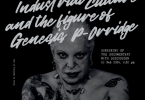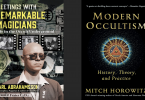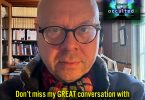The following review by Kadmus was originally posted on the Gods and Radicals website on June 25th, 2015. It is by far the longest and quite possibly the best review so far… And also including a piece of the Mega Golem’s heart… Many thanks for that!
The Mega Golem: A Review of Carl Abrahamsson’s “Reasonances”
Reasonances by Carl Abrahamsson, Scarlet Imprint 2014
If gods can die, leaving us to wander amidst their bones in the miasma of their defuse rot, then gods can be born. Neither ex nihilo nor ad nihilum travel the lives of the gods. Perhaps some gods find their birth in the work of the magician-artist. Amidst the conquest of noise over signal, the dispersion bred of accelerated techno-empirico-capitalist-fragmentation pushing all apart into isolated well-measured sameness, what can bring about a return of some sense of the whole? It is against a background of such considerations that the book Reasonances takes form.
“Meta-programming through fiction and art is the most scientific and poetic way there is of solving our problems, at least according to me. The words affix themselves to the worlds. The worlds filter themselves through the words. The images become parts of the imaginations, the nations of images, all seeking each other out like grounded magnets, polarities or cruising sybarites of the night. If we stop and look, we can see a pattern, or several. And we can use these patterns as tools more than ever before in our own quantum quilts and our own Mega Golem processes.” (Reasonances p. 49)
Carl Abrahamsson’s book is many things: a prismatic net of reflections on Twentieth-Century occultism, art, and their overlaps; a philosophical engagement with the porous border between the magical and artistic processes; a surprisingly hopeful walking along the knife edge of market nihilism, ecological disaster, political corruption, technological acceleration and the dawning of a new way of life; an extended meditation on death and the fragmentary remains of artists and magicians past; a call for the creation of a new divinity, the Mega Golem.
“However, in the end nothing matters. But until then, some things do. Your own mind, for instance, and your own time.” (Reasonances p. 51)
Reasonances is a book of missed appointments, uncompleted artworks, lost connections. For Abrahamsson there will be no future revels with Anton LaVey in San Francisco, though we are graced with a living sense of LaVey’s life and effect as a master magician. We may never know what the moviemaker, Conrad Rooks, was crafting in his bungalow filled with computers in Thailand. But we learn in these pages about his struggle with drugs and the way this struggle was definitive for his film Chappaqua. Ever wonder what it was like to be friends with William Burroughs, Brion Gysin, Man Ray, Allen Ginsberg and Jack Kerouac? Conrad Rooks tells you by telling Abrahamsson. But his final work, drawn from the void stretching from his two great films “Chappaqua” (1966) and “Siddhartha” (1972) to his death in 2011, remains a mystery. We get the sense of an expansive vision, incomplete.
We witness Abrahamsson’s love for Lady Jaye, half of the ongoing “Breyer P-Orridge Existential Art Project” aimed at the creation of one hermaphroditic entity from the lives of Genesis P-Orridge and Lady Jaye, and are left to wonder what remains when half of that one entity has died. Genesis P-Orridge speaks as “we” but Abrahamsson speaks of loss and the dream of a new totality become a fragment.
In Reasonances we witness a fascinating excavation of largely forgotten figures at the borders. At the border of art and the occult we learn of Rosaleen Norton, the Australian artist depicting bacchanals and occult rituals, who faced social rejection and police persecution from the 1940s until her death in 1979. At the border of mysticism and science we find the German philosopher Ernst Junger and hear of his experiments with hallucinogenics, including experiences with LSD shared with its discoverer Albert Hofmann, interwoven with his experiences during the World Wars. Destruction and dispersion face off against the divine he approached through drug experimentation.
Reasonances’ cast of characters is extensive and it weaves stories of forgotten acts of bravery and enchanting personalities that enrich and enliven the history of art and the occult while remaining challenging throughout. What are we to make of Yukio Mishima’s suicide when it is understood as a work of art and connected to his blending of homoeroticism and nationalism in the milieu of the Samurai code? How are we to navigate the call to freedom in Aleister Crowley’s Book of the Law when faced with its seeming glorification of violence and the rule of the strong? How truly critical of the Nazis was Junger whose work, by and large, was admired by them – including by Hitler himself? The book is consistently a work of provocation, seeking to inspire questioning and action without dominating its reader with prefabricated solutions or simple answers.
We could go on to explore the extensive interviews with the Thelemic moviemaker Kenneth Anger, or the exceptionally careful orienting of the life and works of the important novelist Lord Bulwer-Lytton within the occult circles of 19th century England, but ultimately all of these stories and histories are examples of Reasonances’ larger vision – the dream of the Mega Golem.
“As an experiment, try to leave the hermetic and arcane frames of reference alone for a while and use instead those of artistic creation and, if you feel really daring, those of fiction.” (Reasonances p. 41)
To understand the Mega Golem we must first recognize it as the axis of Abrahamsson’s proposal that art needs to learn from the occult and occult practice needs to learn from art. The connection here is not at all unusual, as will be apparent to those with experience in the occult or with knowledge of the history of art. Cave painting, story telling, dance and music all were originally largely the province of priestess and priests, shamans and mystics – occultists par excellence. All served a vital function in bringing about changes to the world of ancient people and maintaining the metaphysical structure and nature of those worlds. Looking at the situation from the contemporary occult angle the connection seems just as obvious. The practice of magic involves visionary states of consciousness much like those used in forms of artistic inspiration, handcrafted tools and sets, dramatic impersonations of gods, poetic invocations and songs.
Beyond the historical overlap, Abrahamsson offers a deeper connection between the processes involved in art and magic. Both involve the control of causal forces through non-causal or non-rational means. In other words, both recognize that there is something about their process of creation that cannot be fully understood or, if it were to be understood, the very act of analysis would destroy the effectiveness of the process. We can see this in the overlap of inspiration and mystical experience in the creation of both works of art and magic. Each starts with the play of unconscious forces rising to consciousness, the moment of inspiration, that must then be distilled into a singular embodiment. Each involves a trust in, and channeling of, intuition. Each manifests a new reality.
This brings us naturally to the Mega Golem. Both the magical act and artistic creation suffer from potential failings or, at least, what can be seen as failings against a certain background. Magical acts can be dominated by a lower worldly will, in other words they can be channeled almost exclusively towards short-term selfish ends. Personal gain in all its various forms, from accentuating natural talents and uncovering insight to gaining money or power, often dominates magical goals even when hidden under the rubric of ongoing initiation. Art, on the other hand, can be devoid of coherent worldly will and instead merely the outcome of immediate inspiration and intuition. We might say, in the case of both magic and art, that inspiration and will need to be conjoined in a final product that goes beyond the immediate ends of the creator.
For magic to escape its solipsism and art to escape its self-indulgent immediacy each must wed themselves to a goal that goes beyond the individual. This is the Mega Golem, a new divinity built from individual artistic-magical acts and works.
“Consider this idea: new, consciously made, magical, talismanic totems as members/parts of a new divinity. Artworks of different kinds become cells and building blocks of a new pagan pantheon of intelligence, of whose essence future generations can rely on and partake. Special importance should be given to indigenous, traditional, tribal and folk culture, woven into the fabric of genuine human creation. The final times of our mercurial technocratic culture could actually help in setting this up before these new gods are properly established enough to live on through the rituals of the post-technocracy-survivals.” (Reasonances p. 30)
We might speculate that the idea of the Mega Golem owes its origin to a distinct aspect of both magic and art. In magic, particularly Chaos Magic, we encounter the idea of the living Thought Form or Egregor. This is an entity that begins as an individual or collective creature of imagination, which, once invested with will or magical energy, becomes an independent spiritual entity with its own lasting existence. Similarly, in art, the work which begins in the artist’s internal processes eventually takes flight into a world where it will give rise to its own interpretations and maintain its own unique existence beyond the intentions of the artist. Both the artwork and Egregor are outcomes of acts of creation that develop, in some sense, a will and life of their own.
The idea of the Mega Golem opens up the possibility that both art and magic might overcome their own limitations. From channeling or communicating with divinities we move to crafting them in a communal form, from creating works of art we move to creating a new world and way of life.
We get a better sense of the central role of self-overcoming in the texture of Reasonances when we consider Abrahamsson’s discussion of Babalon as a magical formula. After tracing the history of the figure of the whore of Babylon from ancient practices of holy prostitution, through the Book of Revelations, to Crowley’s own recreation of the concept he distills what he takes to be the central elements of the magical process that Babalon came to represent. This process is one of self-development through the transgression of taboos. As the author rightly points out, the process requires one to transgress taboos that are still meaningful and powerful within one’s own psyche, not just arbitrary social limitations one has already rejected. Instead, we challenge our own limits and go beyond our own comfort zones through acts of reinvention that release pent up energies within our own being.
We can see each of Abrahamsson’s investigations of, and interviews with, artists and thinkers as case studies in the practice of the formula of Babalon and the uniting of art and magic in a way that might serve the birth of the Mega Golem. Similarly, we can see the very idea of the Mega Golem as a self-overcoming on the part of its inventor. Repeatedly within Reasonances Abrahamsson reveals his own occult upbringing within the context of the Thelemic Ordo Templi Orientis, the Church of Satan and the more Chaos Magic focused Temple ov Psychick Youth in his heavily individualistic understanding of the nature of human existence and both artistic and occult work. Abrahamsson claims in the concluding interview of the book that, “…everything is individual. Any collective or communal decision is based on a consensus formed by individuals. Hence, politics may seem to be rooted in ideas and ideals, but in actual fact the driving force is always individual will, that may or may not be joined by others of a similar persuasion.” (Reasonances p. 160-161). Yet this very view, while exceptionally common in today’s world and a major aspect of most understandings of both libertarian Satanism and Thelema, is a central artifact of the technocratic age Abrahamsson wishes to get beyond. T.O.P.Y., in this regard, is something of a mixed heritage. Based on the use of sigil magic aimed at self-overcoming through the achievement of personal private desires, the organization’s basic structure and goals were nonetheless aimed at the creation of productive networks of artistic exchange and support. Much like the Mega Golem itself, we might suggest that the process of T.O.P.Y. began with the individual in order to escape the contemporary prison of isolation that goes along with our almost unthinking acceptance of radical individualism.
Were the Mega Golem to live it would require a specific transformation from being a conglomeration of individual works into a united whole of its own that goes well beyond any totality of pieces. In fact, through an act of retrospective creation we would have to come to see each step in the forming of the new divinity as already implicit and necessitated by its end. We might say that ultimately each piece of the Golem will come to be seen as an expression of its being willed from beyond the individual artist or occultist. This tension between the individual and the whole forms a central paradox of the book from Abrahamsson’s early call for a renewed “…harmony with the macrocosmic, natural life force. Inherent in this harmony is the adaptation to and, importantly, reverential respect for the movements and routines of the whole.” (Reasonances p. 18) to his concluding claims about the priority of the individual. Abrahamsson rightly sees that this paradox is overcome in the moment when the creator is created by her or his creation. The artist becomes the expression of the work, as the magician becomes a vehicle for the magic. Ultimately, then, the call for an active will-driven magico-artistic creation of a Mega Golem aiming beyond the individual towards a communal and natural macrocosmic goal serves to subvert the focus on individual will. At the risk of putting the project in a way that might be a bit disturbing, each contributor to the Mega Golem serves, or retroactively will have served, the new divinity’s will. Ultimately the project cannot be fully understood from the perspective of the individual.
It is not adequate to respond to a proposal as daring and fascinating as that of the Mega Golem through purely analytic means. Instead, it calls out for an active and creative response. It calls out for a contribution. If you could create a divinity, what aspects would you have it contain? If you were to craft a new vision of reality, a new mode of life, a new metaphysical framework of meaning, what would it look like or smell like or sound like? Each of us alone in isolation at our computer screens face in this moment a communal call from the macrocosm – name me. Give me form and, in doing so, find yourself as an expression of the cosmos we all share.
“No matter what, I hereby set the Mega Golem free. This lecture and this text is the right side of its brain, perhaps one of many brains. It may be enough to give it life, or it may not. It is an occult experiment that is also artistic. It is an artistic experiment that is also occult. I have vaguely attempted to state here today that I don’t really believe there is any major difference between these two spheres. What this Mega Golem will or can do is no longer exclusively up to me. I have done my bit and the rest is now up to you.” (Reasonances p. 43)
In response to the call and in thanks for the work Carl Abrahamsson has given us in Reasonances, I would like to offer a humble contribution of my own – a part of the Golem’s heart:
An Elk hart in the shade from Prairie Creek Redwoods State Park
Something stirs –
Where once rivers flowed,
Where the ghosts of trees rest
Unremembered.
Something wakens –
From concrete
Once mossy banks,
And blinks.
It cherishes –
How the crows used to gossip in the branches
Just so,
And the stones of the river winked
With hidden quartz.
It shelters –
The echoes of days without time
When walks went on forever
And we watched clouds play tag
With our backs bruised with grass stains.
Something smiles –
Where slim stalks will grow
And angry voices will rise in joy
To demand life for the earth
The voiceful wind
The wine dark sea
The shivering wave
The silken sky
Once more.
Something remembers –
The songs we will strike
Like bonfires
In the fields at the end of history.
You can hear its voice calling us together
Hidden in the folds of the breeze
In the corners of the night
When no tread paces.
“Golem?” it asks,
“Call me Hope.”
(Kadmus is a practicing ceremonial magician with a long standing relationship to the ancient Celtic deities. His interests and practice are highly eclectic but a deep commitment to paganism is the bedrock upon which they all rest. Kadmus is also a published academic with a Ph.D. in philosophy teaching at the college level. You can find some of his reflections on the occult at http://starandsystem.blogspot.com/ or look him up on twitter at @starandsystem)
PS: The book itself can be ordered from Scarlet Imprint. Thanks!







